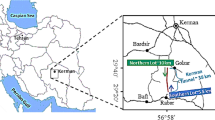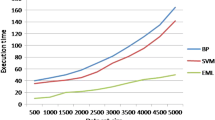Abstract
Effective project selection necessitates considering numerous conflicting factors for the decision making in construction industry. Multiple factors, such as resource requirements, budget control, technological implications and governmental regulations, influence the decision to select an appropriate project selection in construction industry. Among the recent methods and models, an artificial intelligence can be recommended to achieve higher performance than traditional methods in the field. This paper introduces an effective artificial intelligence (AI) model based on modern neural networks to improve the decision making for the projects owners. A hybrid AI model based on least squares support vector machine and cross validation technique is proposed to predict the overall performance of construction projects. The presented model can be successfully utilized for long-term estimation of the performance data in construction industry. Finally, the proposed model is implemented in a real case study for construction projects. To illustrate the capabilities of the proposed model, two well-known AI models, known as back propagation neural network and radial basis function neural network, are taken into consideration. The comparisons demonstrate the superiority of the presented model in terms of its performance and accuracy through the real-world prediction problem.

Similar content being viewed by others
References
Ebrahimnejad LS., Mousavi S.M., Tavakkoli-Moghaddam R., Hashemi H., Vahdani B.: A novel two-phase group decision-making approach for construction project selection in a fuzzy environment. Applied Mathematical Modelling, 36(9), 4197–4217 (2012)
Burke, R.: Project Management: Planning and Control. John Wiley and Sons, Inc. (1999)
Powers, G.; Ruwanpura, J.Y.; Dolhan, G.; Chu, M.: Simulation based project selection decision analysis tooL. Proceedings of the Winter Simulation Conference, pp. 1778–1785 (2002)
Mavrotas, G.; Diakoulaki, D.; Caloghirou, Y.: Project prioritization under policy restrictions. A combination of MCDA with 0–1 programming. European Journal of Operational Research 171, 296–308 (2006)
Chua D.K.H., Li D.: Key factors in bidding reasoning model. Journal of Construction Engineering and Management-ASCE 126(5), 349–357 (2000)
Skitmore, M.: Identifying non-competitive bids in construction contract auctions. Omega 30, 443–449 (2002)
Lin C.T., Chen Y.T.: Bid/no-bid decision making – a fuzzy linguistic approach. International Journal of Project Management 22(7), 585–593 (2004)
Cheng E.W.L., Li H.: Analytic network process applied to project selection. Journal of Construction Engineering and Management-ASCE 131, 459–466 (2005)
Dikmen I., Birgonul M.T., Ozorhon B.: Project appraisal and selection using the analytic network process. Canadian Journal of Civil Engineering 34(7), 786–792 (2007)
Tan, Y.T.; Shen, L.Y.; Langston, C.; Liu, Y.: Construction project selection using fuzzy TOPSIS approach. Journal of Modelling in Management 5(3), 302–315 (2010)
Puthamont, G.C.S.; Charoenngam, C.: Strategic project selection in public sector: Construction projects of the Ministry of Defence in Thailand. International Journal of Project Management 25, 178–188 (2007)
Ravanshadnia, M.; Rajaie, H.; Abbasian, H.R.: Hybrid fuzzy MADM project-selection model for diversified construction companies. Canadian Journal of Civil Engineering 37, 1082–1093 (2010)
Mousavi, S.M.; Tavakkoli-Moghaddam, R.; Vahdani, B.; Hashemi, H.; Sanjari, M.J.: A new support vector model-based imperialist competitive algorithm for time estimation in new product development projects. Robotics and Computer-Integrated Manufacturing 29, 157–168 (2013)
Vahdani B., Iranmanesh H., Mousavi S.M., Abdollahzade M.: A locally linear neuro-fuzzy model for supplier selection in cosmetics industry. Applied Mathematical Modelling 36(10), 4714–4727 (2012)
Tavakkoli-Moghaddam, R.; Mousavi, S.M.; Hashemi, H.; Ghodratnama, A.: Predicting the conceptual cost of construction projects: a locally linear neuro-fuzzy model. The First International Conference on Data Engineering and Internet Technology (DEIT), pp. 398–401 (2011)
Mousavi, S.M.; Iranmanesh, S.H.: Least squares support vector machines with genetic algorithm for estimating costs in NPD projects. The IEEE International Conference on Industrial and Intelligent Information (ICIII 2011), Indonesia, pp. 127–131 (2011)
Deng, S.; Yeh, T.-H.: Applying least squares support vector machines to airframe wing-box structural design cost estimation. Expert Systems with Applications 37, 8417–8423 (2010)
Wu Q.: A hybrid-forecasting model based on Gaussian support vector machine and chaotic particle swarm optimization. Expert Systems with Applications 37, 2388–2394 (2010)
Huang, S.-C.; Chuang, P.-J.; Wub, C.-F.; Lai, H.-J.: Chaos-based support vector regressions for exchange rate forecasting. Expert Systems with Applications Expert Systems with Applications 37, 8590–8598 (2010)
Ling, F.Y.Y.; Liu, M.: Using neural network to predict performance of design-build projects in Singapore. Building and Environment 39, 1263–1274 (2004)
Albino, V.; Garavelli, A.C.: A neural network application to subcontractor rating in construction firms. International Journal of Project Management 16(1), 9–14 (1998)
Hong, W.-C.; Dong, Y.; Chen, L.-Y.; Wei, S.-Y.: SVR with hybrid chaotic genetic algorithms for tourism demand forecasting. Applied Soft Computing 11, 1881–1890 (2011)
Mashford J., Rahilly M., Davis P., Burn S.: A morphological approach to pipe image interpretation based on segmentation by support vector machine. Automation in Construction 19(7), 875–883 (2010)
Chen P.-H., Shen H.-K., Lei C.-Y., Chang L.-M.: Support-vector-machine-based method for automated steel bridge rust assessment. Automation in Construction 23, 9–19 (2012)
Burges, C.J.C.: A tutorial on support vector machines for pattern recognition. Data Mining and Knowledge Discovery 2(2), 121–167 (1998)
Peng, K.L.; Wu, C.H.; Goo, Y.J.: The development of a new statistical technique for relating financial information to stock market returns. International Journal of Management 21(4), 492–505 (2004)
Vapnik, V.N.: The Nature of Statistical Learning Theory. Springer, London (1999)
Chang, C.-C.; Lin, C.-J.: LIBSVM: A library for support vector machines (2008)
Huang C.-F.: A hybrid stock selection model using genetic algorithms and support vector regression. Applied Soft Computing 12, 807–818 (2012)
Chen, K.-Y.; Wang, C.-H.: Support vector regression with genetic algorithms in forecasting tourism demand. Tourism Management 28, 215–226 (2007)
Salgado D.R., Alonso F.J.: An approach based on current and sound signals for in-process tool wear monitoring. International Journal of Machine Tools and Manufacture 47, 2140–2152 (2007)
Efron B.: Estimating the error rate of a prediction rule: Improvement on cross-validation. Journal of the American Statistical Association 78, 316–331 (1983)
Efron, B.; Tibshirani, R.J.: An Introduction to the Bootstrap. Chapman & Hall, London (1993)
Duan, K.; Keerthi, S.; Poo, A.: Evaluation of simple performance measures for tuning SVM hyper parameters. Technical report, Singapore: National University of Singapore, Department of Mechanical Engineering (2001)
Author information
Authors and Affiliations
Corresponding author
Rights and permissions
About this article
Cite this article
Vahdani, B., Mousavi, S.M., Hashemi, H. et al. A New Hybrid Model Based on Least Squares Support Vector Machine for Project Selection Problem in Construction Industry. Arab J Sci Eng 39, 4301–4314 (2014). https://doi.org/10.1007/s13369-014-1032-8
Received:
Accepted:
Published:
Issue Date:
DOI: https://doi.org/10.1007/s13369-014-1032-8




